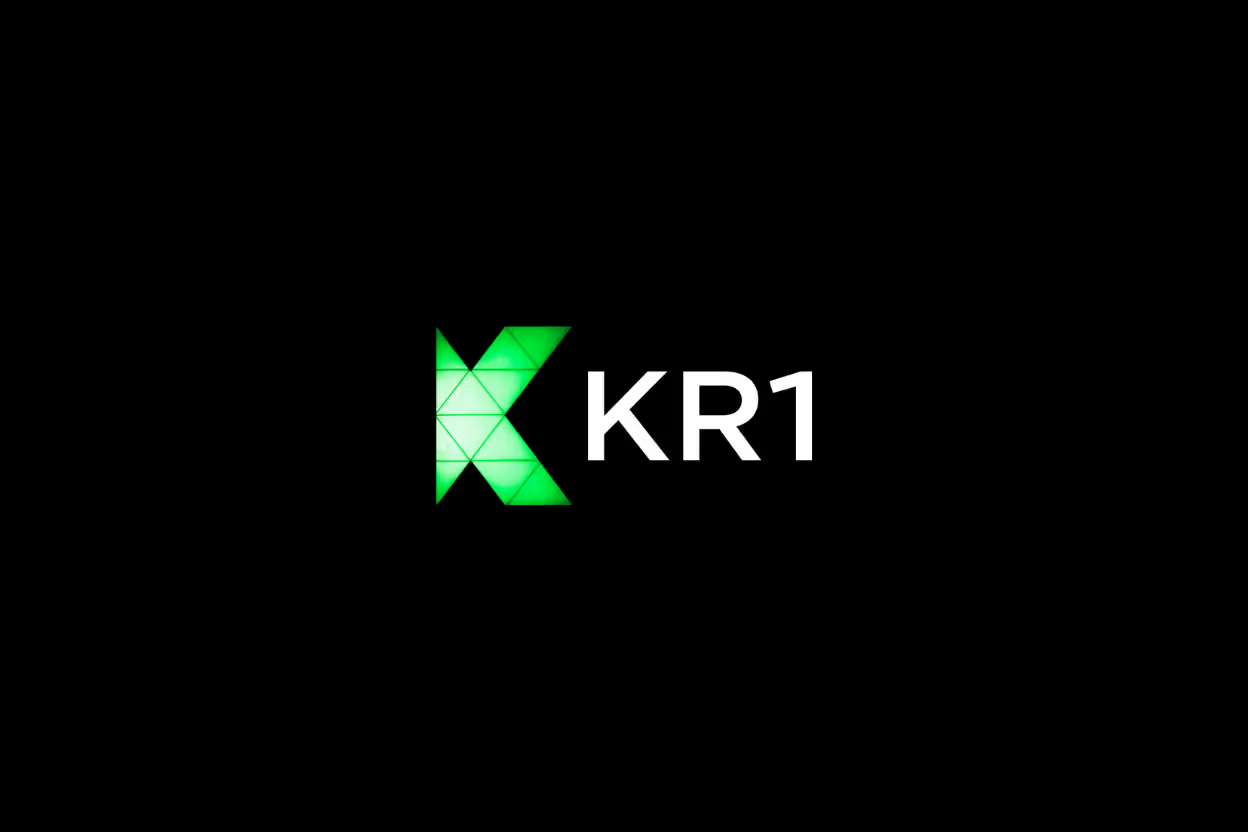The Chain That Thrived by Prioritizing Stability Over Aggressive Scaling [Analysis for Founders & Investors]
In blockchain development, scaling often dominates conversations. Projects race to handle more transactions per second, aiming to solve bottlenecks and meet demand. But not every chain chooses this path.
Some blockchains focus on stability and security by keeping growth measured and steady. This approach may seem slower but can offer long-term durability. It raises questions like: Can refusing aggressive scaling help a blockchain survive market fluctuations? How do founders balance performance with reliability?
This post looks at that unique strategy, offering insights valuable to crypto founders, web3 developers, and investors curious about alternative paths beyond the typical push for speed and scale.
Understanding Blockchain Scaling: Common Approaches and Challenges
Scaling is a critical topic in blockchain because it directly affects a network's ability to handle more users and transactions without sacrificing essential qualities like security or decentralization. Before diving deeper into why some chains choose to scale aggressively while others resist, it’s important to understand the basic reasons blockchains scale and the common methods used. Alongside these approaches come inherent challenges, often revolving around trade-offs that any blockchain project must face.
Why Do Blockchains Scale?
Imagine a highway during rush hour. If the road is narrow and traffic grows, cars slow down, causing congestion. The same happens to blockchains when the number of transactions exceeds the network’s capacity. Scaling allows blockchains to:
- Process more transactions per second (TPS)
- Reduce transaction fees
- Improve user experience by speeding up confirmation times
- Support a growing ecosystem of applications and users
Without proper scaling, blockchains risk becoming slow and expensive, pushing users toward alternatives. But scaling is not just about speed; it’s about maintaining a balanced, functioning system as demand grows.
Layer 2 Solutions and Sidechains
To avoid clogging the main blockchain, developers have created solutions that handle transactions off the main chain or in parallel chains. Two popular approaches include:
- Layer 2 Solutions: These operate on top of the main blockchain, moving most transactions off-chain but settling final results on-chain. Examples include payment channels and rollups. Layer 2 cuts down the load on the main chain while preserving security guarantees.
- Sidechains: These are independent blockchains pegged to the main chain. They handle their own transactions but can connect back to the main chain for security or asset transfers.
Both methods help scale capacity without bloating the core blockchain. However, they introduce complexities such as bridging risks and potential security trade-offs, requiring careful design and user trust.
Trade-offs Between Scalability and Security
Increasing speed and capacity often means giving up some security features or increasing complexity. Why is security a challenge when scaling? Because every added layer or shortcut can potentially open new attack vectors.
For example, Layer 2 networks depend on the main chain’s security but also need mechanisms to prevent fraud on their own layers. Sidechains might rely on different consensus rules, making them less secure if their validators are weaker or fewer in number.
Blockchain developers constantly weigh:
- How much trust to place in additional layers
- The risk of centralized points of failure
- How to detect and handle fraud or errors promptly
The core challenge remains how to scale without undermining the trust users place in the network.
Decentralization vs. Throughput: The Scalability Trilemma
One of the most discussed challenges in blockchain design is the “scalability trilemma.” It states a blockchain can only optimize for two of these three: decentralization, security, or scalability.
- Decentralization means many participants validate transactions.
- Security ensures the network resists attacks.
- Scalability is the network’s ability to handle high transaction volume.
Increasing throughput usually requires stronger hardware or fewer validating nodes, which can reduce decentralization. Maximizing security with widespread validators may limit transaction speeds.
This trilemma pushes blockchain teams to pick where to focus. Some choose to remain highly decentralized and secure but accept slower speeds, while others prioritize speed with trade-offs in security or decentralization. Asking “Can a blockchain survive by refusing to scale aggressively?” ties directly to how it navigates this trilemma.
In understanding these approaches and challenges, we can better appreciate why some blockchains have chosen stability over rapid scaling. It’s a careful balancing act, where more isn’t always better.
Case Study: The Chain That Chose Stability Over Scale
Not every blockchain chases rapid growth. Some choose a different path—prioritizing stability and security over handling massive transaction volumes. This case study examines such a chain, exploring how its design decisions helped it survive where many scaled chains struggled. By looking closely at its architectural choices, consensus model, and the way it built trust, we’ll see the tangible benefits of refusing to scale aggressively. Here’s the story behind the chain that bet on steadiness instead of speed.
Architectural Choices Favoring Stability
Instead of pursuing high throughput, this chain’s architecture emphasizes safety, simplicity, and long-term reliability. It avoids complex layered solutions like multiple sidechains or Layer 2 expansions that can add points of failure. The core protocol is designed to:
- Keep transaction processing straightforward, minimizing potential bugs.
- Limit block size and frequency to maintain node synchronization.
- Support a large number of independent nodes to preserve decentralization.
This approach results in a network that runs predictably under real-world conditions. While the peak transactions per second (TPS) may be lower than aggressively scaling chains, the architecture ensures consistent performance. Think of it like a freight train running on a solid track rather than a racecar on a slippery, fast road prone to crashes.
Consensus Mechanism and Security Focus
Security isn’t just a feature; it’s the backbone of this blockchain. The chain uses a consensus mechanism designed not to maximize speed but to protect against attacks and network splits. Its model includes:
- A consensus algorithm with proven resistance to various attack vectors.
- A verification process that prioritizes correctness over raw speed.
- Minimal reliance on fewer or centralized validators, promoting decentralization.
By putting security first, the network maintains the integrity of every transaction, even if this means slower block times or confirmation delays. This conservative consensus gives users confidence their assets and data remain safe, fostering a loyal and growing community.
Long-term Survivability and Community Trust
Survival in crypto markets hinges on more than tech specs. This chain’s choice to prioritize stability has built community trust and developer confidence over time. Here’s why this matters:
- Users appreciate knowing the chain won’t experience sudden breakdowns.
- Developers have a predictable environment to build applications without frequent protocol changes.
- Investors see value in a sustainable model that reduces catastrophic risk.
This steady approach helps buffer the chain against volatile market cycles. It acts like a trusted anchor in a sea of hype and rapid shifts, keeping the ecosystem intact when more aggressively scaled chains encounter setbacks.
How Does Refusing to Scale Affect Network Usage and Adoption?
Choosing stability over scale naturally impacts how the network grows and how users engage with it. Some effects include:
- Lower transaction throughput may deter high-frequency use cases.
- Transaction fees can remain steady or slightly higher during traffic spikes, balancing supply and demand.
- Adoption curve tends to be slower but more organic, attracting users prioritizing reliability.
- Developer interest may focus on robust applications requiring consistent performance rather than raw speed.
This model raises an important question for founders and VCs: Is rapid growth worth risking network reliability? In this chain’s case, measured growth built a sustainable foundation, trading flashy numbers for ongoing trust and usability that can outlast hype cycles. Sometimes, refusing to race ahead is the smartest way to cross the finish line.
By looking at this example, it becomes clear that stability-focused blockchains offer an alternative to fast scaling—a choice that may better suit projects aiming for longevity and real-world adoption rather than pure speed.
The Benefits of Refusing to Scale Aggressively
Choosing not to scale aggressively may seem counterintuitive in an industry that often prizes rapid growth and high transaction speeds. Yet, some blockchains demonstrate that pacing growth can bring substantial advantages. By focusing less on expanding capacity and more on maintaining core values, these chains avoid pitfalls that come with complexity and rushed scaling. This section explores key benefits that come with a measured, cautious approach to scaling.
Enhanced Security Through Limited Complexity
Scaling often involves adding layers of technology, such as sidechains, Layer 2 solutions, or sharding. While these can increase throughput, they also introduce new challenges. Every extra piece adds potential vulnerabilities, increasing the attack surface. Networks that refuse to scale aggressively benefit from simpler systems where:
- The core protocol remains easier to audit and understand.
- There are fewer chances for bugs or exploits hidden in code complexity.
- Consensus mechanisms maintain robust security guarantees without shortcuts.
This focus on limited complexity reduces risk, making the network less prone to unexpected failures and attacks. Secure simplicity builds user confidence, especially in an environment where security breaches can be devastating.
Decentralization as a Core Value
Aggressive scaling often requires compromises that can concentrate power, such as requiring validators to run more powerful hardware or reducing the number of nodes. This can threaten decentralization, a foundation of blockchain trust. By scaling slowly or minimally, a blockchain can:
- Support a broader and more diverse set of validators.
- Keep entry barriers low, enabling anyone to participate in network consensus.
- Avoid central points of failure that come with fewer validators.
Preserving decentralization helps maintain censorship resistance and network fairness. It also fosters resilience; if one part of the network goes down or behaves maliciously, others can keep it honest and running.
Building and Sustaining Community Trust and Developer Ecosystem
When a blockchain opts for steady scaling, it sends a clear signal: reliability and user trust matter most. This approach usually encourages:
- Developers to build on a stable, predictable platform without fearing sudden protocol changes.
- Users to rely on the network for long-term commitments rather than quick speculative gains.
- Investors to value sustainability and reduce exposure to risky scaling failures.
Communities grow around steady projects, creating a feedback loop of trust and contribution. Developers innovate within stable boundaries, producing software that aligns with core network principles.
Is Slower Growth a Viable Strategy for Blockchain Projects?
Slower growth can spark debates in blockchain circles where "bigger and faster" is often synonymous with success. But is rushing to scale always worth the trade-offs? A measured pace:
- Allows time to test, fix, and improve protocols.
- Avoids overloading nodes or excluding smaller participants.
- Builds a foundation that can handle future growth more safely when the ecosystem is ready.
For many projects, slower growth isn’t a weakness; it’s a strategic decision to last beyond the hype cycle. It asks the question: Is it better to be the tortoise or the hare in blockchain adoption? For chains focusing on security and decentralization, choosing to move steadily can mean survival and relevance in the long term.
Choosing not to scale aggressively means embracing a mindset where every step forward counts for stability and trust. By avoiding the rush, certain blockchains safeguard their future against the very risks that fast scaling often invites.
Implications for Crypto Founders and Investors
When it comes to blockchain, the decision to scale or hold back has ripple effects far beyond technology. Crypto founders and investors face complex choices that shape the future of their projects and portfolios. Choosing slower growth or refusing aggressive scale isn’t simply about cautiousness—it’s a strategic call with trade-offs in risk, community trust, and innovation potential. This section breaks down key implications to help you weigh your options with a clear view of the challenges and opportunities ahead.
Evaluating Risks in Scaling Decisions
Scaling a blockchain is risky business. On one side, pushing for high throughput and faster transactions promises greater adoption. But on the other, it introduces technical vulnerabilities and operational challenges that can shake user confidence. Founders must analyze:
- Security risks: Adding new layers or increasing complexity can open new attack surfaces. Are the added throughput gains worth more potential breaches?
- Decentralization impact: Does increasing hardware requirements for validators reduce the number of nodes, risking centralization and censorship?
- Network stability: Can the blockchain handle sudden spikes in traffic, or will node synchronization suffer, causing delays and forks?
For investors, these risks translate into project longevity concerns. Rapid scaling can yield fast wins, but also sudden crashes or outages. Understanding how a project balances growth with safety is key to protecting your investment.
Strategies for Sustainable Blockchain Growth
Sustainable growth means moving forward without sacrificing the network’s core strengths. This involves a mix of development discipline and targeted innovation. Founders can consider strategies such as:
- Prioritizing protocol simplicity: Limit added features that increase attack vectors.
- Incremental capacity increases: Scale in manageable steps to test and adapt.
- Focusing on Layer 2 or sidechain solutions with strong security guarantees: Offload demand without risking the core chain.
- Building a diverse validator community: Keep entry accessible to preserve decentralization.
Investors should back projects with clear, transparent roadmaps that emphasize long-term reliability over hype. Sustainable growth supports solid user bases and stable value.
Balancing Innovation and Stability in Investment Decisions
How can investors spot projects that strike the right balance? Stability supports trust, but innovation attracts users and developers eager for new functionality. Ask:
- Does the project demonstrate consistent delivery on security measures and audit transparency?
- Are new features thoroughly tested and rolled out gradually, or pushed prematurely?
- How well does the team communicate risks and roadmap changes with the community?
Founders, in turn, must manage the tension between pushing boundaries and keeping the network steady. Overpromising fast scaling may alienate cautious investors or provoke technical failures. Thoughtful pacing can maintain credibility while still accommodating evolving needs.
Choosing growth strategies that focus on stability helps crypto projects avoid common pitfalls that come with fast scaling trends. For investors, this approach reduces exposure to sudden crashes and builds confidence in the project’s lasting value. When founders and investors align around measured growth and trust, the blockchain can truly thrive beyond the short-term noise.
Conclusion
Looking back at the journey of a blockchain that chose not to scale aggressively, the key takeaway is clear: survival and strength come from focusing on the essentials rather than chasing rapid growth. This approach may fly under the radar compared to fast-scaling competitors, but it creates a foundation built on security, decentralization, and trust. That foundation withstands shocks and market storms that can topple more ambitious but fragile chains.
Stability Over Speed Creates Lasting Value
By refusing to push for high transaction throughput at all costs, this chain avoided many common pitfalls:
- Complex new layers prone to bugs or exploits.
- Centralization risks from demanding hardware requirements.
- Network instability during traffic spikes or software upgrades.
Instead, it focused on predictable performance and solid security that users and developers could count on. This strategy may slow short-term adoption but often produces a healthier, longer-lasting ecosystem.
Trust and Reliability Build Strong Communities
Growth fueled by hype tends to be fragile. Communities built around stability, on the other hand, grow resilient through shared confidence in the network’s soundness. Predictability invites developers to create dependable applications and investors to value the chain for its durability. Long-term users see a blockchain as trustworthy when it avoids sudden failures and constant protocol upheaval.
Rethinking What Success Looks Like in Blockchain
In an industry obsessed with raw speed and massive throughput, refusing to scale aggressively may seem like going against the grain. But it raises an important question: Is faster always better? Or might slowing down, focusing on core values, and maintaining a steady course bring more meaningful success? Sometimes, the best way to win the race is to run it carefully.
As founders and investors, understanding this more measured path helps balance growth ambitions with sustainability. It invites us to ask not just how fast a chain can grow, but how well it can endure. That mindset could be the difference between fleeting hype and lasting impact.









